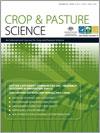Issue 11-12 - Special Issue: Cotton Catchment Communities CRC – Research Outcomes & Innovation (Part 2)
Articles (1)
REVIEW PAPERS (7)
RESEARCH PAPERS (5)

No abstract available
